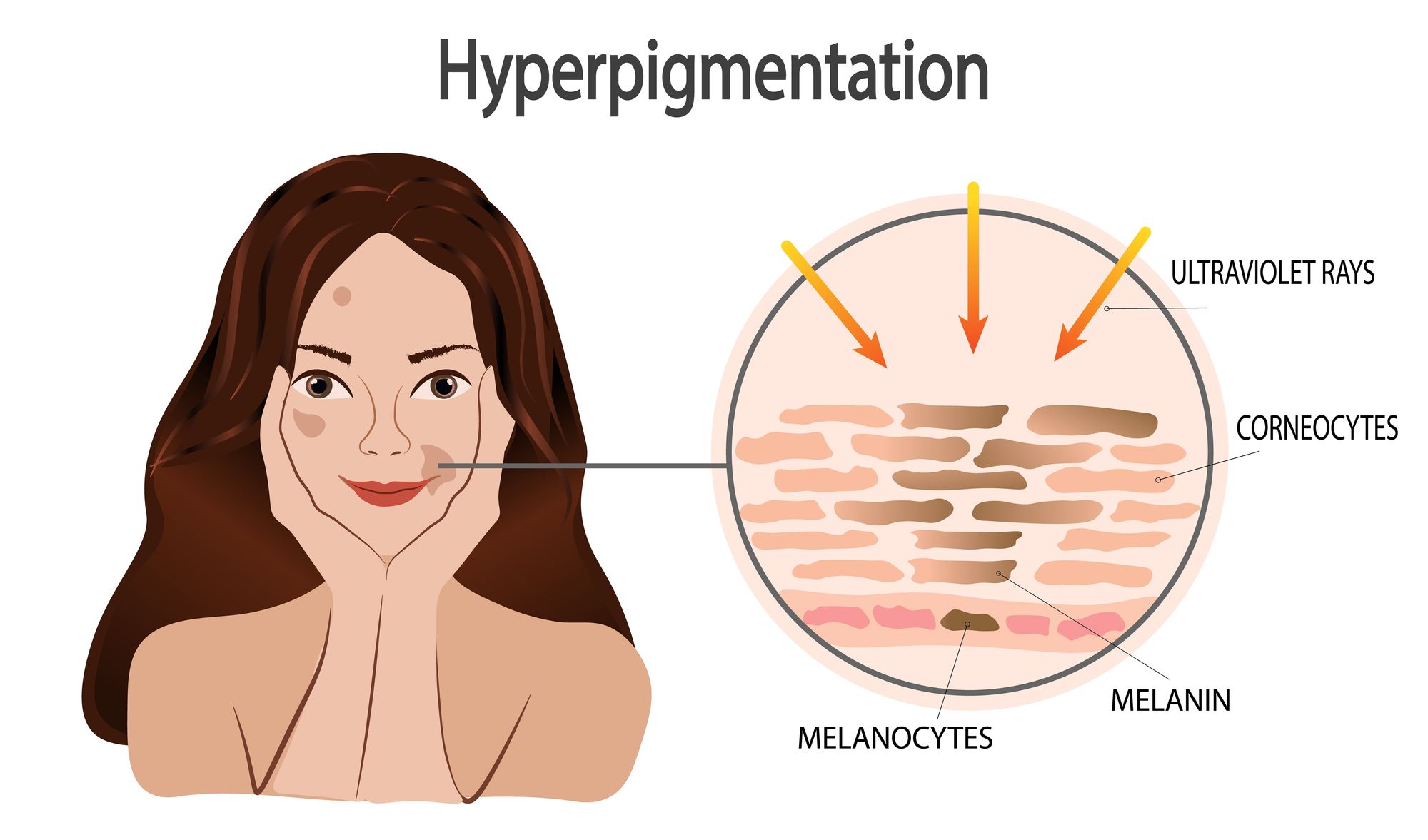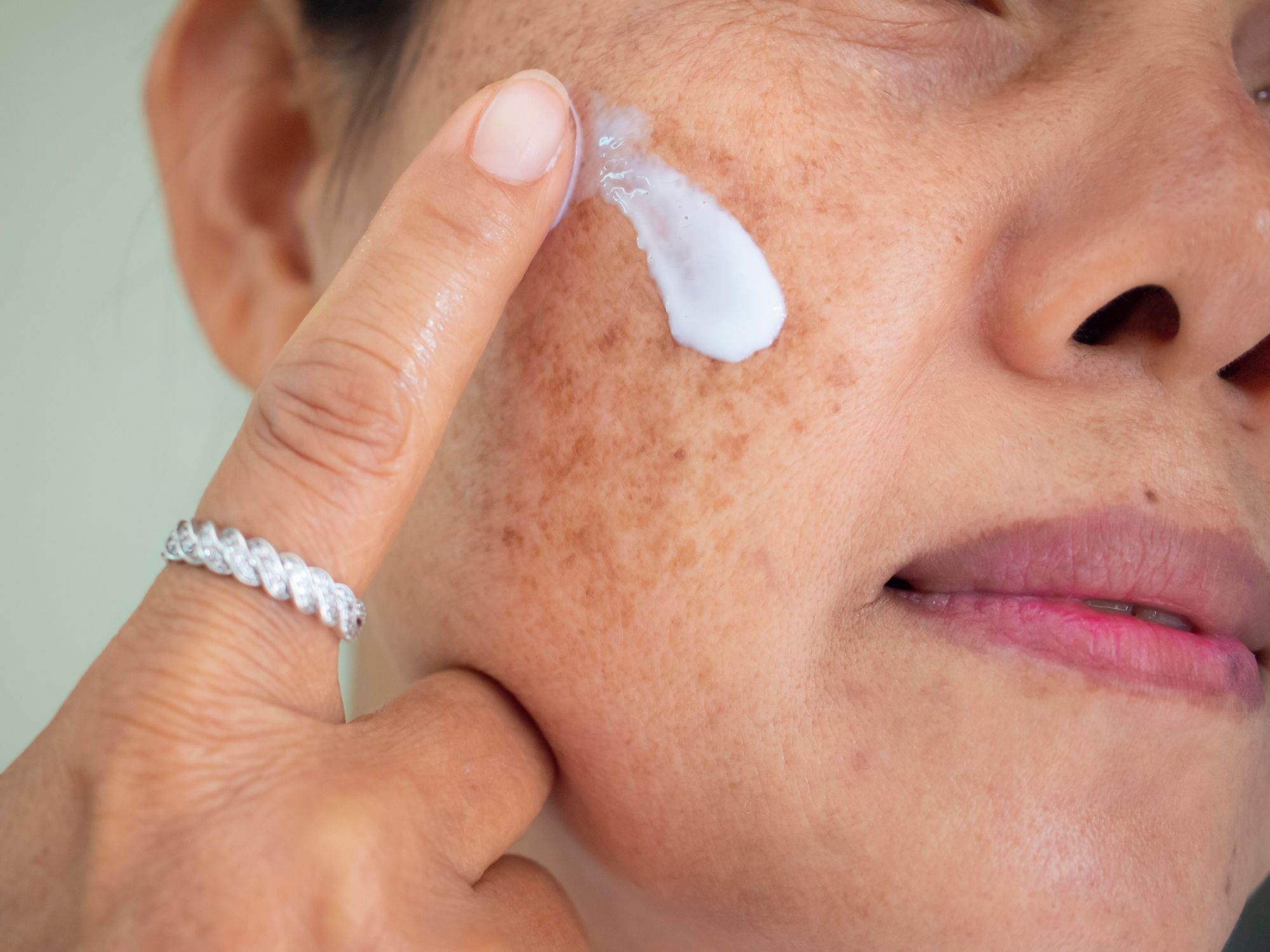If you’ve every suffered from those peskty brown-tinged patches you know how annoying it is. Pigmentation or hyperpigmentation is definitely one of those skincare concerns that pops out of nowhere… across the cheeks, chin, forehead. But instead of daunting you every time you look into the mirror, read on to hear what celebrity dermatologist, Dr. Jamuna Pai has to say about this skin condition and how to help keep in under control and treat it.
What pigmentation is?
Pigmentation is a common, usually harmless condition in which patches of skin become darker in colour than the normal surrounding skin. This darkening occurs when an excess of melanin, the brown pigment that produces normal skin color gets deposited in the skin. Indian skin type (Fitzpatrick Type IV) is more susceptible to hyperpigmentation.
How does it comes about?
- Sun exposure—Year-round exposure to the sun’s rays stimulates the overproduction of melanin. Exposure to the UV rays in the sunlight causes the melanin pigment to come up on the surface as it is a protective mechanism. But excessive exposure can cause sunspots, “Solar Lentigos”, which appear as flat brown ‘muddy’ patches on the areas of skin that are more exposed to the sun.
- Hormonal imbalances: that occurs during pregnancy, post-pregnancy, pre-menopause or menopause form another contributing factor.
- Antibiotics, hormone treatments, anti-seizure or anti-malarial drugs, all of which can bring on hyperpigmentation.
- Certain diseases like Addison’s disease and hypothyroidism are also known to cause hyperpigmentation.
- Skin injuries and inflammation. Injury could lead to PIH or Post-inflammatory Hyperpigmentation. Even a relatively simple problem like a mosquito bite can cause PIH.

What can one do to treat it?
One of the go-to home remedy masks for tackling skin pigmentation is to take the juice of half a lime and mix it with the juice of half a medium-sized potato (grate to remove the juice). Lime is rich in citric acid and therefore helps to bleach the skin while potatoes contain the catecholase enzyme, which also helps brighten the skin.
Dr. Jamuna Pai also recommends the following for anti-pigmentation…
A number of creams are available in the market, which can claim to treat pigmentation. They include active topical agents with berry extracts, arbutin, vitamin C and glycolic acid, which is an extract of sugarcane juice, kojic acid, arbutin and azelic acid. These are definitely very good, but need to be used in the correct concentration to yield best results. These creams work by hampering the production of melanin while simultaneously increasing cell turnover by sloughing o the top layer of dead skin so that the existing pigmentation is flushed out. You can treat your skin while you sleep by overnight applications of these agents, but needless to say under medical supervision.
At her clinic, SkinLab, you can find various treatments are available that help fight pigmentation such as the Advanced Skin Brightening Peel—Being one of the most efficient and fastest ways to reduce pigmentation. This peel influences the melanogenesis (pigment producing) process. It contains: kojic acid, phytic acid, ascorbic acid, arbutine, titanium dioxide and retinyl palmitate which block the formations of melanin (pigment) by inhibiting the tryosinase—an essential enzyme involved in the formation of pigment.
Follow @missmalinibeauty on Instagram for more updates. And join Malini’s Girl Tribe to be a part of the conversation.

